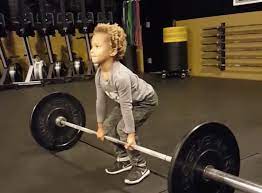What is movement fluency
True movement fluency is attained through progressive practice and eventual mastery of the language of human movement. Movement fluency can be defined as the ability to respond effortlessly and efficiently to any movement problem presented. A worthwhile analogy- is to look at movement as a language in a more detailed way. When teaching a language, we first build competence with letters, words, grammar, phrases, then sentences, paragraphs, increasing vocabulary and eventually fluency- over time. This process goes tragically off course when we take any child of any age and begin to sport specialize, prior to building foundational movement vocabulary
Movement Gaps
Today, more and more kids are showing what we call Movement Gaps, which means they are missing the ability to move in expected fundamental ways, through lack of exposure to and repetition of foundational human positions and movements, e.g. Running, jumping, climbing, landing etc. Movement Gaps in youth are increasing every year. This should come as no surprise to coaches and trainers who have been working with youth. Increased sedentary behavior combined with lack of unstructured play, outdoor exploration and increased sports specific training have left massive gaps in what was a previously expected as natural and normal movement acquisition in our children.
The most common movement gaps we see are:
- Foot, ankle and knee positional stability and strength
- Inability to jump or land with two feet simultaneously
- Inability to stabilize the core or midline
- Inability to hinge at the hip
- Lack of dorsiflexion
- Maladaptive patterns due to obesity, or excessive sedentary behavio
Lack of moving often causes additional problems with coordination, accuracy balance and agility. Leading to exercises within what were formerly assumed in common movement vernacular, that no longer can be assumed, including: Side shuffle, Jumping Jack, Plank Hold, Push up, Broad Jump, Skipping, Climbing The more capable a child becomes in solving the movement problems thrown at them, the more “Movement Fluency” they have. Since kids used to gain movement fluency through hours and hours of outside free play and for a variety of reasons our culture doesn’t allow for this to occur naturally, often and organically the way it used to- new solutions must be found to create more opportunities to build physical literacy. Now we see kids stepping onto the sports field, court or coming into our gym who seem to be missing whole chapters or sections of the aforementioned “library”. These missing chapters put them at risk of burnout or injury, mute their potential in sport and diminish their joy in activity. It is our job as youth coaches here at activate to assess which sections of the library are missing and help kids acquire the necessary experience to fill in those sections.
If you would like to find out more you can contact youth@activate.ie or sign up by clicking the link below

